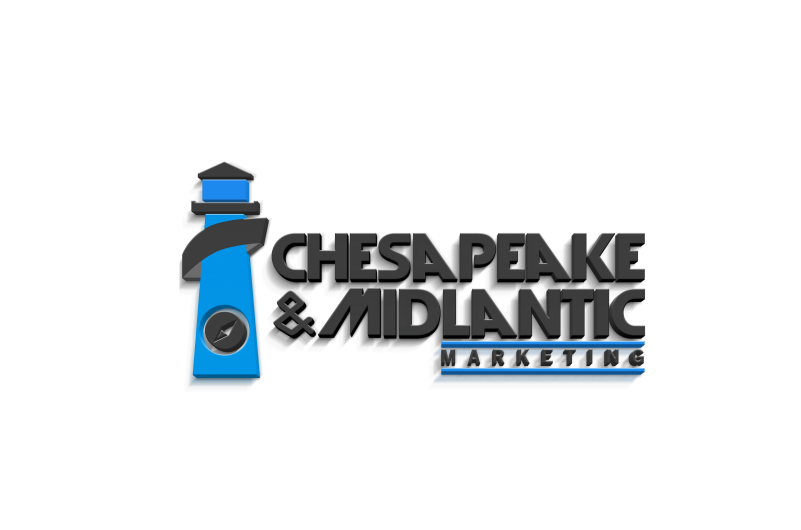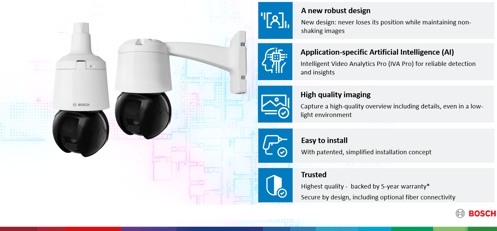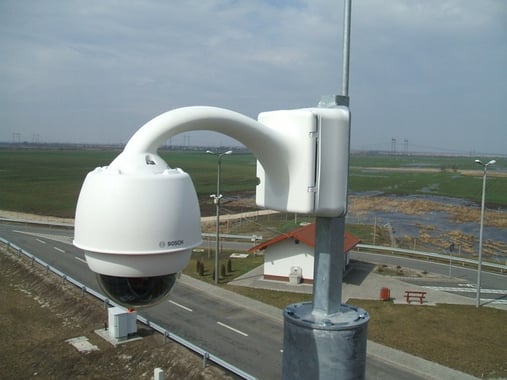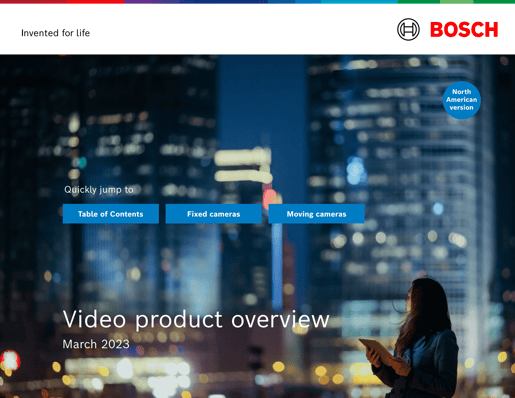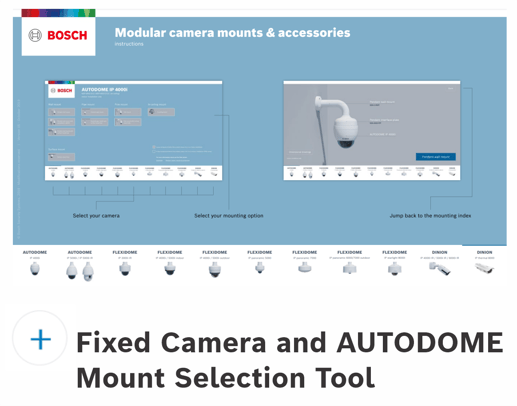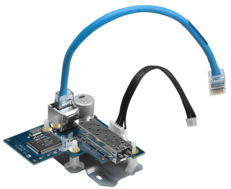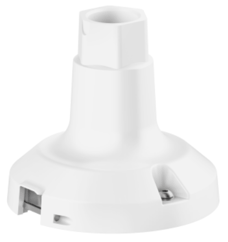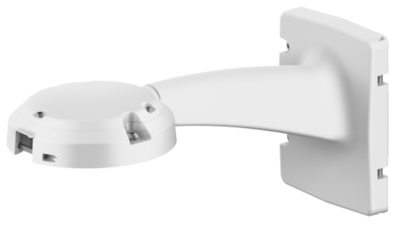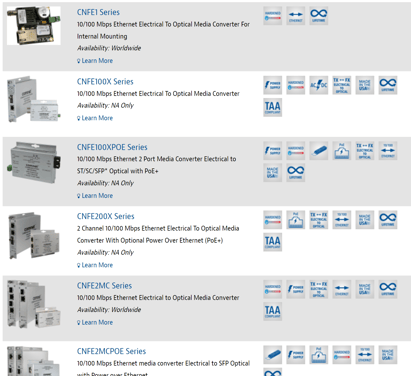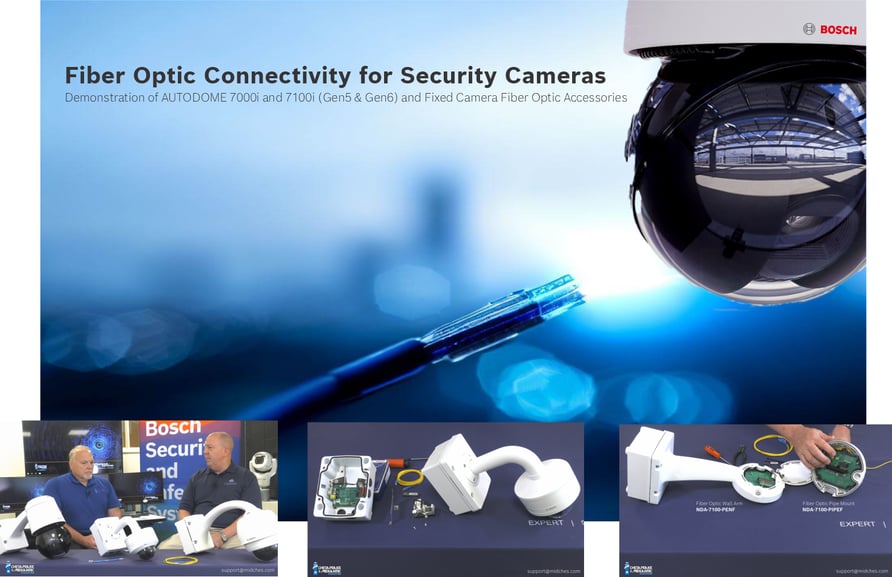
Ensuring reliable and robust connectivity for edge devices is of paramount importance.
Whether it's surveillance cameras, access control systems, or alarms, choosing the right cabling infrastructure is critical. While both fiber optic and copper cables have their merits, we will delve into why a physical security professional might opt for fiber optic cable over copper cable for edge device installations and then take a closer look at how to connect fiber optics to the Bosch 7000i (Gen5) and 7100i (Gen6) AUTODOME as well as to Bosch fixed cameras using the universal mounting accessories.
First, let's look at why fiber optic connectivity is desirable:
-
Bandwidth and Speed: One of the primary advantages of fiber optic cable is its ability to transmit data at extremely high speeds and over long distances. This feature is particularly beneficial in physical security systems, where real-time video monitoring and data transfer are crucial. Fiber optic cables can handle large volumes of data without experiencing signal degradation, making them ideal for transmitting high-definition video feeds from security cameras at the edge. Copper cables, on the other hand, are more prone to interference and signal loss, resulting in potential latency issues.
-
Enhanced Security: Security professionals understand the importance of safeguarding their systems against potential threats, including hacking and data breaches. Fiber optic cables provide a higher level of security compared to copper cables due to their unique properties. Unlike copper cables, fiber optic cables do not emit electromagnetic signals that can be intercepted, making them resistant to electromagnetic interference (EMI) and radio frequency interference (RFI). This inherent security feature makes fiber optic cables less susceptible to unauthorized access, ensuring the integrity and confidentiality of the transmitted data.
-
Immunity to Environmental Factors: Physical security devices are often deployed in challenging environments, such as outdoor locations or industrial settings. Fiber optic cables excel in such conditions as they are immune to various environmental factors that can degrade the performance of copper cables. Fiber optic cables are resistant to temperature fluctuations, moisture, and even corrosion. This resilience ensures uninterrupted communication and extends the longevity of the cabling infrastructure, minimizing maintenance and replacement costs.
-
Longer Transmission Distances: Another significant advantage of fiber optic cables over copper cables is their ability to transmit data over much longer distances without any significant loss in signal quality. This makes fiber optic cables an excellent choice for edge device installations, where security devices might be distributed across vast areas or even multiple locations. Copper cables, in contrast, suffer from signal attenuation over distance, requiring the use of repeaters or signal boosters, which can add complexity and cost to the overall infrastructure.
-
Future-Proofing and Scalability: Deploying physical security systems involves significant investments, both in terms of capital and operational expenses. By opting for fiber optic cables, physical security professionals can future-proof their installations. Fiber optic technology provides greater bandwidth capabilities than copper, ensuring that as security systems evolve and demand higher data rates, the cabling infrastructure will not become a bottleneck. Additionally, fiber optic cables offer more scalability, allowing for easier upgrades and the addition of new devices without the need for major reconfigurations or cable replacements.
Part 1 of 3
Tom Fontana and Steve Pennington provide an overview of connectivity via fiber optic cables in this short introduction overview video, Part 1 of our three-part series on fiber optic connectivity:
Part 2 of 3
In this video, Steve and Tom discuss fiber optic connectivity for the Bosch AUTODOME 7000i (Gen5) series of pan-tilt-zoom cameras as well as recent fixed cameras using the universal mount accessories:
Part 3 of 3
In this video, Steve and Tom discuss fiber optic connectivity for the Bosch AUTODOME 7100i (Gen6) pan-tilt-zoom cameras:
Ask us for system design assistance >>
AUTODOME 7100i (Gen6) Information >>
AUTODOME 7000i (Gen5) Information >>
Bosch Camera Selection Guide >>
Fixed Camera and AUTODOME Mount Selection Tool >>
Bosch VG4-SFPSCKT Fiber Optic Interface for Backbox Installation >>
Bosch NDA-7100-PIPEF Fiber Optic Pipe Mount for AUTODOME 7100i (Gen6) >>
Bosch NDA-7100-PENF Fiber Optic Pendant Wall Arm Mount for AUTODOME 7100i (Gen6) >>
Comnet External Media Converters >>

